VOICE | Kontemporary: Kyungha Song & Julie Hongji Seok
本期「声场」我们对话Kontemporary创始人Kyungha Song和Julie Hongji Seok,他们向我们讲述了他们所创立的“Kontemporary收藏”,其以当代性为核心的建立理念、基于跨学科理论模型的购入决策过程、通过全球旅行对东亚艺术市场内部差异的观察,以及机构从私人收藏向公共知识生产转型的长期愿景。
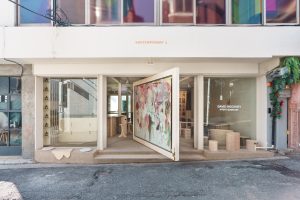
Kontemporary 1 in 2018
© Kontemporary
In this edition of VOICE, we speak with Kyungha Song and Julie Hongji Seok, founders of Kontemporary. They share the vision behind the Collection, discussing its core commitment to contemporaneity, the interdisciplinary theoretical models that inform their acquisition decisions, their observations on the internal dynamics of East Asian art markets through extensive global travel, and the institution’s long-term ambition to evolve from a private collection into a platform for public knowledge production.
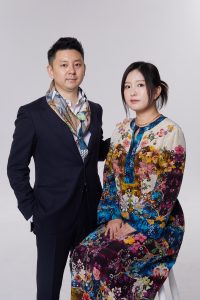
Kyungha Song,
Julie Hongji Seok
Founders of Kontemporary
KONTEMPORARY is an art-driven creative agency shaping cultural value across art, real estate, and entertainment. Through integrated strategy, creative direction, and cross-industry collaborations, we develop and expand art-based intellectual and cultural assets.
We also operate KONTEMPORARY COLLECTION, which manages our growing art collection, and the KONTEMPORARY ARTIST RESIDENCY, dedicated to supporting artists through curated programs and collaborations.
KS & JHS:
Kyungha Song, Julie Hongji Seok
Q: What has been your philosophy guiding the Kontemporary Collection? Is there any threads that constitute the Collection?
KS & JHS: ‘Kontemporary’ derives from ‘Contemporary’, emphasizing that contemporaneity is at the core of our identity. Replacing the first letter with a ‘K’ reflects our intent to define contemporaneity through our own perspective.
The Kontemporary Collection aims to pursue the very standard of contemporaneity itself. In the boundless realm of contemporary art, our purpose is not merely to gather works but to reflect an understanding of precise coordinates across time and place. Through our ongoing journey of tracing the ever-shifting geopolitical landscape of contemporary art, our collection and theory naturally accumulate, becoming a record of our engagement with the present.

Kyungha Song at his desk
© Kontemporary
Q: What is the decision-making process of acquiring a new collection?


Image above: Josef Albers exhibition at Kontemporary 1 in 2019
Image blow: Kontemporary Collection annual exhibition
at a national heritage house
© Kontemporary
KS & JHS: The theoretical model that supports our understanding of the ever-evolving landscape of contemporary art serves as the key framework guiding our new acquisitions.
We first established a classification system that maps the entire global art scene, continually updating how each segment evolves year by year. For instance, if there are roughly twenty thousand galleries worldwide, it is essential to observe which galleries we focus on each year and how their relationships shift over time. This requires ongoing research and, often, direct engagement on site.
Next, the evaluation of individual works that capture our attention is crucial. From the Renaissance of the fifteenth century to the most recentcreations, we have defined and refined a set of indicators that we consider fundamental to understanding art. Importantly, these criteria are not derived from market results or quantitative data alone. Rather, they draw from intersections between art and disciplines such as neuroscience, psychology, sociology, and anthropology, exploring how artistic expression reflects human capacities and conditions. Interestingly, many market outcomes tend to align with these deeper correlations.
Owning works that offer lasting intellectual and emotional satisfaction matters far more to us than acquiring those that simply rise in price. Ultimately, such works often prove to be those that perform strongly in the art market as well. We review thousands of works before selecting a single piece for acquisition, and the insights gained through this direct experience are indispensable in refining our model. Our collection thus represents an essential, evolving stage in that ongoing process.


Image above: Samuel Guerrero’s works
at Kontemporary Artist Residency in 2023
Image blow: Choon Mi Kim’s works at Eterno Cheongdam
special exhibition
© Kontemporary
Q: Through which primary channels do you discover new artists and artworks? Galleries, art fairs or social media etc.?
KS & JHS: Art fairs, galleries, social media, biennales, museums, and exchanges among collectors—all are equally essential. Online research must always be grounded in firsthand, offline experience.
Major exhibitions tend to move along with the global circuit of key art fairs and biennales, so our annual framework naturally follows those schedules. Each year, this outline is then refined and adjusted according to new destinations, emerging events, and evolving contexts.
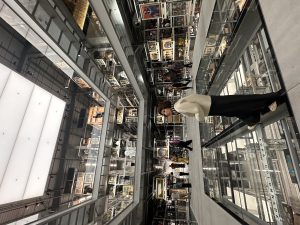
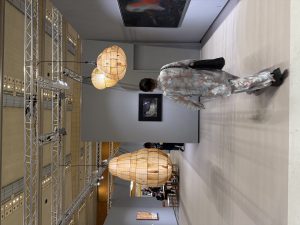
Image above: Julie Hongji Seok at V&A East Storehouse
Image blow: Kyungha Song at Frieze Seoul
© Kontemporary
Q: Your global travel experiences allow you to deeply engage with the art ecosystems of East Asia. From this perspective, what differences have you observed within the East Asian art markets?
KS & JHS: Korea, China, and Japan have long shared historical and cultural ties. While the three countries share common characteristics that distinguish East Asian culture from other regions, each also possesses its own unique identity and expression.
East Asian art has a long and sophisticated history dating back to antiquity. However, the global art market as we know it today is largely built upon the tradition of Western art that developed after the fifteenth century. The dominance of canvas and oil painting as foundational media of modern and contemporary art has contributed to this orientation. Consequently, the position of East Asian art within the global market remains somewhat unsettled, and the intrinsic value of a work is not always reflected equally in its market value.
Although our collection focuses primarily on contemporary art, we maintain a constant interest in historical works whose true artistic significance may not yet be fully recognized by the market. We believe that the role of experts and role models who can help reveal and affirm such overlooked value is essential to shaping a more balanced understanding of art’s worth.
Within the art market, each of the three countries plays a distinct role. China holds importance through its immense historical depth, purchasing power, and potential. Japan, sustained by a continuous tradition of craftsmanship, exerts a strong influence both in Asia and globally. Korea stands out for its exhibition strategies, communication, and global visibility, demonstrating a uniquely dynamic presence in the contemporary art world.
Q: Does Kontemporary Collection have a long-term vision to institutionalize?
KS & JHS: Even at this early stage, we have been experimenting with roles that encompass those of a museum, agency, and a research institute. For example, we have presented parts of our collection through public exhibitions, organized artist residencies and curated special projects, and shared our theoretical frameworks through seminars and publications. We believe it is not enough simply to become collectors—it is essential to be conscious of what kind of collectors we aspire to be.
As our collection continues to grow, the spaces needed to present it publicly will expand as well, and the theories we develop will eventually take form as books, research archives, or even AI models. We are steadily refining a range of concrete ideas to advance this vision.
While our own initiatives are important, we also value the role of connecting and supporting existing institutions and individuals. Our activities extend across continents, linking galleries, museums, artists, collectors, and art fairs around the world. We also collaborate on diverse projects with auction houses, developers, and even K-pop stars—building bridges between art, culture, and contemporary life on a global scale.
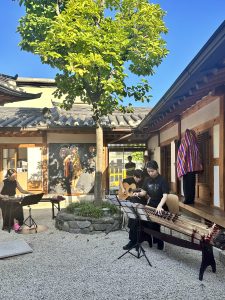
Kontemporary Collection annual exhibition with traditional performance session
© Kontemporary
Q: Could you share some important recent acquisitions you have made?
KS & JHS: The work by Wang Ye, acquired this year from Yve Yang Gallery at Art Basel Hong Kong, represents an outstanding example of contemporary Chinese art. As an artist who experienced the global art scene through the Yale MFA program, Wang skillfully integrates the traditional Chinese technique of silk embroidery into her practice, beautifully merging deep-rooted heritage with a forward-looking artistic language. Her work embodies the coexistence of tradition and innovation that defines the evolving identity of Chinese contemporary art.
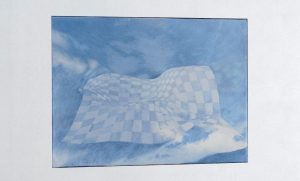
Wang Ye
Soft, 2024
Silk on silk embroidery, 20 × 30 cm
© Yve Yang Gallery and the artist
At Marianne Boesky Gallery during New York Art Week, we acquired a work by Thalita Hamahoui, whose solo exhibition was among the most compelling of the season. Within the current global trend highlighting female abstract painters, Hamaoui stands out as a leading figure of the Brazil-centered movement. Her career is poised to grow beyond Brazil and onto the broader international stage.
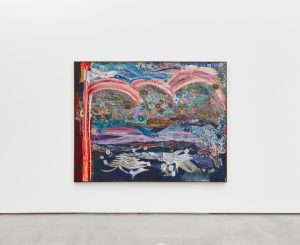

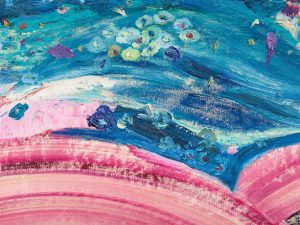
Thalita Hamaoui
Mil milhas, 2025
Oil and oil stick on linen, 188 × 236 cm
© Marianne Boesky Gallery and the artist
Photo: Jason Wyche
Q: How do the collecting tastes and acquisition modes of Korea’s new generation of young collectors today differ from those of the traditional older generation of collectors?
KS & JHS: Over the past decade, the context of art collecting has changed dramatically. The expansion of the global art market, the rise of online auctions, and the increasing transparency of art market information all highlight how different the starting point is for today’s young collectors compared with that of earlier generations.
In Asia in particular, art was long perceived less as a circulating asset and more as a form of cultural appreciation. This contrasts with Western markets, where auction houses such as Sotheby’s and Christie’s have maintained continuous operations since the eighteenth century, shaping a long-standing infrastructure for art as both culture and capital.
For us, bridging past experiences with new ones is essential. As part of a new generation of collectors, we strive to understand the values and perspectives of those who came before us, learning from their legacy while reinterpreting it for our time.

